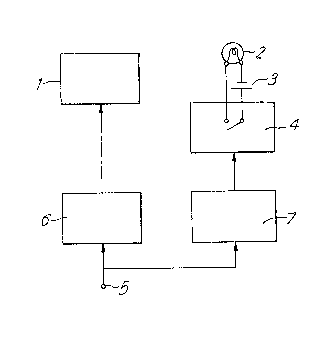Some of the information on this Web page has been provided by external sources. The Government of Canada is not responsible for the accuracy, reliability or currency of the information supplied by external sources. Users wishing to rely upon this information should consult directly with the source of the information. Content provided by external sources is not subject to official languages, privacy and accessibility requirements.
Any discrepancies in the text and image of the Claims and Abstract are due to differing posting times. Text of the Claims and Abstract are posted:
| (12) Patent Application: | (11) CA 2084026 |
|---|---|
| (54) English Title: | ILLUMINATION OF DISPLAYS |
| (54) French Title: | ECLAIRAGE POUR AFFICHAGE ELECTRONIQUE |
| Status: | Deemed Abandoned and Beyond the Period of Reinstatement - Pending Response to Notice of Disregarded Communication |
| (51) International Patent Classification (IPC): |
|
|---|---|
| (72) Inventors : |
|
| (73) Owners : |
|
| (71) Applicants : |
|
| (74) Agent: | SMART & BIGGAR LP |
| (74) Associate agent: | |
| (45) Issued: | |
| (22) Filed Date: | 1992-11-27 |
| (41) Open to Public Inspection: | 1993-05-29 |
| Examination requested: | 1994-09-01 |
| Availability of licence: | N/A |
| Dedicated to the Public: | N/A |
| (25) Language of filing: | English |
| Patent Cooperation Treaty (PCT): | No |
|---|
| (30) Application Priority Data: | ||||||
|---|---|---|---|---|---|---|
|
ABSTRACT
A problem arises in electronic equipment
incorporating a display, such as an LCD display, which
is not intrinsically illuminated. The present
invention provides a controlled backlight for such
displays, and is particularly useful in battery-
powered equipment where power consumption must be kept
to a minimum. The circuitry comprises a display 1
controlled via a conventional display driver 6 from
other equipment (not shown) such as a microprocessor.
Whenever the display is changed a signal is sent also
to a timer circuit 7 which triggers, and passes a
control signal to an electronic switch 4 which in turn
passes power from a battery 3 to a lamp 2. The lamp
2 is arranged to illuminate the display 1. After a
preset period, the timer circuit 7 sends a further
control signal to the switch 4 to switch lamp 2 off.
Figure 1.
Note: Claims are shown in the official language in which they were submitted.
Note: Descriptions are shown in the official language in which they were submitted.

2024-08-01:As part of the Next Generation Patents (NGP) transition, the Canadian Patents Database (CPD) now contains a more detailed Event History, which replicates the Event Log of our new back-office solution.
Please note that "Inactive:" events refers to events no longer in use in our new back-office solution.
For a clearer understanding of the status of the application/patent presented on this page, the site Disclaimer , as well as the definitions for Patent , Event History , Maintenance Fee and Payment History should be consulted.
| Description | Date |
|---|---|
| Inactive: IPC from MCD | 2006-03-11 |
| Application Not Reinstated by Deadline | 1999-03-26 |
| Inactive: Dead - No reply to s.30(2) Rules requisition | 1999-03-26 |
| Deemed Abandoned - Failure to Respond to Maintenance Fee Notice | 1998-11-27 |
| Inactive: Status info is complete as of Log entry date | 1998-06-19 |
| Inactive: Abandoned - No reply to s.30(2) Rules requisition | 1998-03-26 |
| Inactive: S.30(2) Rules - Examiner requisition | 1997-09-26 |
| Request for Examination Requirements Determined Compliant | 1994-09-01 |
| All Requirements for Examination Determined Compliant | 1994-09-01 |
| Application Published (Open to Public Inspection) | 1993-05-29 |
| Abandonment Date | Reason | Reinstatement Date |
|---|---|---|
| 1998-11-27 |
The last payment was received on 1997-11-06
Note : If the full payment has not been received on or before the date indicated, a further fee may be required which may be one of the following
Please refer to the CIPO Patent Fees web page to see all current fee amounts.
| Fee Type | Anniversary Year | Due Date | Paid Date |
|---|---|---|---|
| MF (application, 5th anniv.) - standard | 05 | 1997-11-27 | 1997-11-06 |
Note: Records showing the ownership history in alphabetical order.
| Current Owners on Record |
|---|
| AT&T WIRELESS COMMUNICATIONS PRODUCTS LTD. |
| Past Owners on Record |
|---|
| GRAHAM EDGAR BEESLEY |